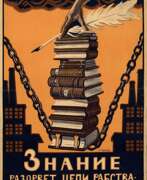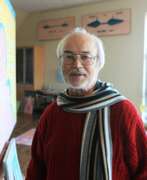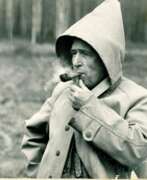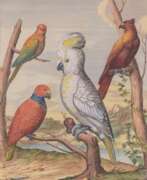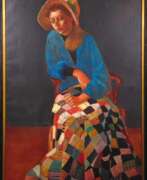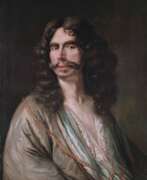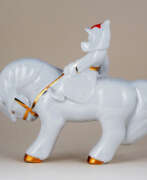Graphic artists Animalistic
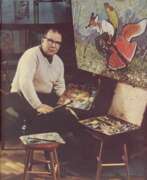

Yevgeny Mikhailovich Rachev (Russian: Евгений Михайлович Рачёв) was a Soviet artist of the twentieth century. He is known as a painter, graphic artist, animalist, and illustrator.
Yevgeny Rachev specialized in illustrations for folk tales and fables from different cultures, as well as for works of classical literature. He favored stories in which the main characters were animals, embodying their natural characters and habits. Thanks to a subtle psychological analysis, the artist gave his illustrations expressiveness and social sounding. His works are valued for their accurate rendering of animal habits and detailed settings.
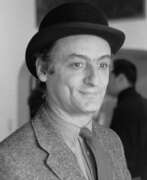

Larry Rivers (born Yitzroch Loiza Grossberg) was an American artist, musician, filmmaker, and occasional actor. Considered by many scholars to be the "Godfather" and "Grandfather" of Pop art, he was one of the first artists to merge non-objective, non-narrative art with narrative and objective abstraction.


Eun Nim Ro is a South Korean artist who has worked in Germany.
She moved to Germany as a nurse in 1970, where she had the opportunity to exhibit her first works and receive art education. Eun Nim Ro developed an intuitive style of painting that combined Korean brush and ink drawings with the expressiveness of Western art. Naively drawn signs of fish, birds, trees and human figures became the artist's symbols. Eun Nim Ro's creative work is not limited to painting, she has also worked in other disciplines such as performance, calligraphy, painting, ceramics or installation. She has designed the windows of St. Johannes Church in Altona, among others, as well as light walls for government buildings in Seoul.
In 1990, Eun Nim Ro took up a professorship at the Hamburg University of Applied Sciences. In 1995, the artist became an honorary citizen of Seoul, and in 2015 she was also awarded the title of professor in Korea.
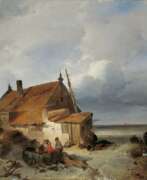

Charles Rochussen was a 19th-century painter from the Netherlands, who was also known as an illustrator and printmaker. While still a child, Charles showed a talent for drawing; between 1831 and 1834 he produced watercolor studies of birds. In 1837 he enrolled at the academy in The Hague, where he was taught by Wijnand Nuijen andAnthonie Waldorp. During his Hague period, which lasted until 1843 (or, according to some sources, 1846), he painted landscapes and beach and village views. Then he started painting looser, more along the lines of the upcoming Impressionism movement.
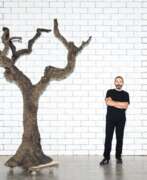

Ugo Rondinone is a Swiss-born artist widely recognized for his mastery of several different media — most prominently sculpture, drawing and painting, but also photography, architecture, video and sound installation — in the largely figurative works he has made for exhibitions in galleries, museums and outdoor public spaces around the world. He has never limited himself to a particular material, no more than he has to a single discipline. Lead, wood, wax, bronze, stained glass, ink, paint, soil and stone are all tools in a creative arsenal that the artist has employed to extend the Romantic tradition in works that are as sensitive to the passage of time as to the nuances of body language and the spoken word.


Alfred Ronner was a Belgian painter, graphic artist and illustrator. From 1868 to 1879, he studied at the Académie Royale des Beaux-Arts in Brussels. After graduating, he chose to become a genre and portrait painter, rather than focus on animals and still-lifes like his other family members. Although he participated in numerous salons, he never became as popular or familiar as they did. He took a few students, notably Marcel Jefferys. In 1880, he participated in the Belgian Prix de Rome, but did not advance past the preliminary stages. Eventually, he abandoned painting, because the turpentine fumes irritated his weak lungs, and focused entirely on book illustration. Many of his illustrations were for children's books.
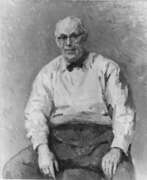

Wilhelm Rudolph was a German painter, graphic artist and teacher.
Rudolph studied at the Dresden Art School, fought in World War I and returned to art. He went from Post-Impressionism to Expressionism and later became a follower of the New Objectivity with a bias towards socially relevant subject matter. Rudolph's first successes and fame came from his graphic depictions of animals.
In 1932, Wilhelm Rudolph was appointed a professor at the Dresden Academy of Art, but with the National Socialists coming to power in Germany, the artist's works were classified as so-called degenerate art. Since 1937 he was forbidden to exhibit and sell his works, 43 of his paintings were confiscated, and in 1939 he was dismissed from the Academy.
At the end of the war, the artist created his major work - an extensive graphic series of 150 sheets on the theme of the bombing of Dresden by American aircraft on the night of February 13-14, 1945, as a result of which the city was completely destroyed. This essential work remains an unrivaled artistic record of that tragedy. Wilhelm Rudolph was a two-time winner of the GDR National Prize and worked actively until his old age.
